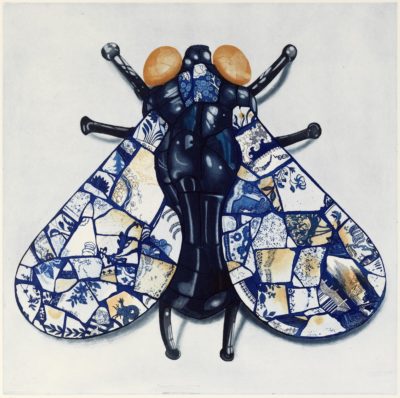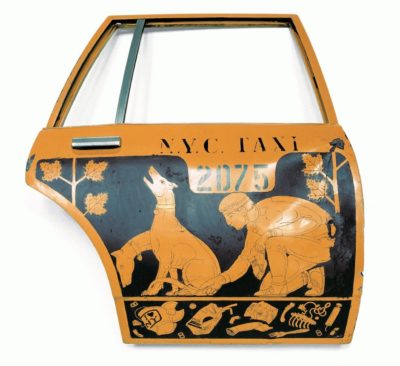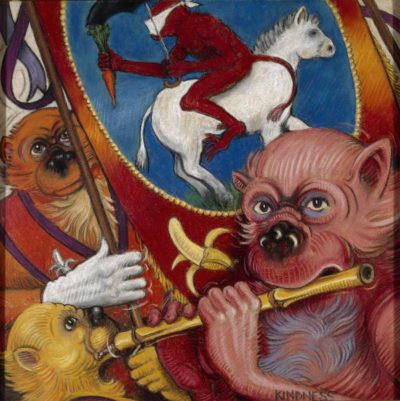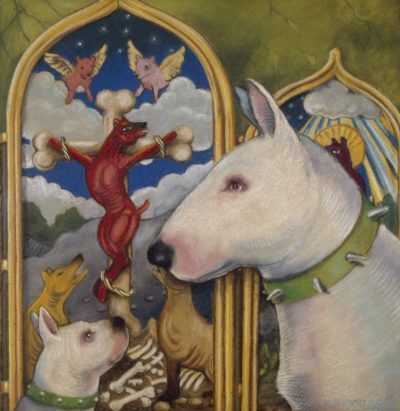Dulce et Decorum est…, 1990
The artwork is part of a series made during Kindness’ residency at PS1 in New York. It depicts homeless Vietnam veterans, highlighting their social abandonment by the very society whose values and freedoms they fought to defend. The image is created on the yellow bonnet of a New York City taxi and it mimics the style of ancient Greek vase painting. The yellow paint of the door was scraped away and then darkened with metal oxide, resulting in a black image on a yellow background. By referencing ancient visual traditions, Kindness suggests that contemporary life will one day be seen as historical artifacts.
The title of the artwork comes from Dulce et Decorum Est, a poem by the English poet Wilfred Owen, written between 1917 and 1918 while he was fighting in World War I. Owen is known for his descriptions of wartime suffering. He challenges the glorified image of war by using a quote from the Roman poet Horace: Dulce et decorum est pro patria mori (“It is sweet and fitting to die for one’s country”). The phrase, originally intended to praise patriotic sacrifice, is used by Owen to expose the horrifying realities of war.
| Medium | Etched painted steel |
| Dimensions | Unframed, 153 x 163 cm |
| Credit Line | IMMA Collection: Purchase, 1991 |
| Item Number | IMMA.13 |
| On view | Art as Agency, IMMA Collection: 2025-2028, 08/02/2025 - 07/01/2027 |
| Copyright | For copyright information, please contact the IMMA Collections team: [email protected]. |
| Tags |





